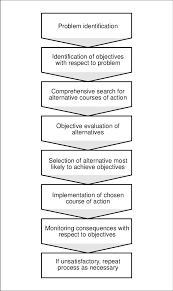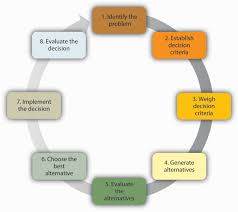Programmed Decision Example
In the world of business, programmed decisions are routine decisions that are made based on established guidelines or rules. These decisions are repetitive in nature and can be automated to ensure consistency and efficiency. Let’s explore an example of a programmed decision:
Inventory Replenishment
One common example of a programmed decision is inventory replenishment. In retail businesses, inventory levels need to be monitored regularly to ensure that products are available for customers to purchase. When inventory levels fall below a certain threshold, a decision needs to be made regarding when and how much inventory to reorder.
By setting up an automated system that tracks inventory levels and triggers reorders when they reach a certain point, businesses can streamline the process of inventory replenishment. This programmed decision eliminates the need for manual intervention and ensures that products are always available for customers.
Through the use of programmed decisions like inventory replenishment, businesses can improve efficiency, reduce costs, and maintain optimal inventory levels to meet customer demand.
Five Essential Tips for Implementing Effective Programmed Decisions
- Clearly define the problem that needs a programmed decision.
- Identify the specific criteria and conditions for making the decision.
- Ensure that the decision rules are well-documented and understood by all involved.
- Regularly review and update the programmed decision to reflect any changes in circumstances or requirements.
- Monitor the outcomes of programmed decisions to assess their effectiveness and make improvements as needed.
Clearly define the problem that needs a programmed decision.
When implementing a programmed decision, it is crucial to clearly define the problem that requires such a decision. By precisely outlining the issue at hand, such as inventory replenishment in a retail business, organizations can establish specific criteria and guidelines for making routine decisions. This clarity ensures that the programmed decision aligns with the organization’s goals and objectives, leading to more effective and efficient outcomes. Defining the problem sets the foundation for a structured approach to decision-making, enabling businesses to automate processes and maintain consistency in their operations.
Identify the specific criteria and conditions for making the decision.
When implementing a programmed decision, it is crucial to identify the specific criteria and conditions that will guide the decision-making process. By clearly defining the criteria that need to be met and the conditions under which the decision will be made, organizations can ensure consistency and accuracy in their decision-making. This approach helps in streamlining the process, reducing ambiguity, and enabling stakeholders to make informed choices based on established guidelines. Identifying specific criteria and conditions also facilitates automation of decisions, leading to greater efficiency and effectiveness in achieving desired outcomes.
Ensure that the decision rules are well-documented and understood by all involved.
To effectively implement programmed decisions, it is crucial to ensure that the decision rules are well-documented and clearly understood by all parties involved. By documenting the decision rules, organizations can establish a consistent framework for making decisions and avoid confusion or misinterpretation. When everyone understands the rules governing programmed decisions, they can confidently apply them in their day-to-day activities, leading to more efficient and effective decision-making processes. Clear communication and documentation of decision rules are essential for ensuring that programmed decisions are executed accurately and consistently across the organization.
Regularly review and update the programmed decision to reflect any changes in circumstances or requirements.
It is crucial to regularly review and update programmed decisions to align with any changes in circumstances or requirements. By staying proactive and ensuring that programmed decisions are kept current, businesses can adapt to evolving situations and maintain the effectiveness of their decision-making processes. Regular reviews help identify any necessary adjustments needed to optimize the decision-making model, ensuring that it continues to support efficient operations and strategic goals. Keeping programmed decisions up-to-date allows organizations to remain agile and responsive in the face of changing conditions, ultimately enhancing overall performance and success.
Monitor the outcomes of programmed decisions to assess their effectiveness and make improvements as needed.
It is essential to monitor the outcomes of programmed decisions to evaluate their effectiveness and identify areas for improvement. By tracking the results of programmed decisions, organizations can gain valuable insights into how well their established guidelines are working in practice. This monitoring process allows for adjustments to be made as needed, ensuring that the decision-making process remains efficient and effective over time. Regularly assessing the outcomes of programmed decisions helps organizations refine their strategies and adapt to changing circumstances, ultimately leading to better decision-making practices and improved overall performance.




